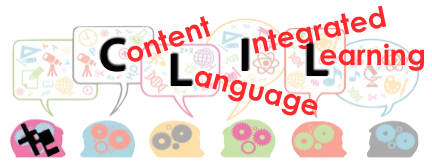La unidad que he elegido es Women's Art de "Secuencias elaboradas por el Profesorado" de la Junta de Andalucia (Espana).
- ¿Cómo se ve reflejado el trabajo con la lengua y el contenido a la vez? ¿Qué actividades lo evidencian?
En esta unidad se mencionan los contenidos del curso en la asignatura de Educacion artistica plastica y por otro lado los contenidos linguisticos, estructuras y lexico. He de mencionar que no hay mucha correlacion entre ellos, ya que en la parte de contenidos de la asignatura se hace especial hincapie en las tecnicas artisticas, sus diferentes usos, aunque por supuesto tambien el aspecto biografico e historico de las autoras que se mencionan. En la parte linguistica, exclusivamente se menciona y destaca vocabulario de pasado y de opinion, pero no se menciona nada sobre palabras especificas de las tecnicas y palabras que definan las acciones de su uso. Imaginemos que queremos hacer un retrato con la tecnica del carboncillo, no se menciona dicha tecnica, pero la podemos ver en las obras expuestas como ejemplos... En la parte final se mencionan los materiales de las esculturas, pero no las tecnicas para dar forma. Considero en este punto que es una actividad donde no se conecta la accion , la actividad y la comunicacion, en mi opinion ofreceria la posibilidad a los alumnos/as de elegir un estilo, un material, una tecnica y que mientras la desarrollan pudieran explicar parte del proceso en L2 mientras que el profesor/a puede tomar nota, tipo dictado de esta parte oral o incluso grabarlo y compartirlo en el blog de arte de la escuela. Aparte el alumnado puede crear su propia ficha digital que incluya el video, foto, y otros apartados escritos y audiovisuales que admitan comentarios como puede ser padlet.
Una actividad que evidencia la correlacion de los contenidos linguisticos y su uso es en la actividad 6 y 7 donde tienen que completar informacion. Este tipo de actividades se hacen de forma individual y en el papel, creo que se podria crear un quiz como kahoot, por ejemplo.
- ¿Que características de la metodología AICLE se ven reflejadas y de qué modo?, ¿uso de andamiaje, flexibilidad, cercano al alumno, variedad de recursos, trabajo por tareas, etc.? ¿De qué manera se refleja en las actividades de la unidad?
Realizando el analisis me gustaria comentar que esta unidad esta disenada para el alumnado de quinto curso de educacion primaria. Cuando he leido toda la unidad no veo en ningun apartado nada sobre su contexto, si se menciona el nivel de idioma L2 segun MCER A1.3. Creo que seria importante mencionar mas caracteristicas del contexto del alumnado y del centro para ver cuanto se acerca a la realidad de los estudiantes, ya que las conexiones con su entorno mas proximo son muy importantes para un aprendizaje significativo y el desarrollo de los distintos niveles de procesar la informacion y el pensamiento (thinking levels).
La secuencia de actividades no realiza un progreso, a mi parecer muy acertado en ocasiones, ya que en la primera actividad pide si reconocen las imagenes no sabemos si es el estilo, las autoras o el contenido de las imagenes. En la siguiente se hace una clasificacion de las mismas de acuerdo a la clasificacion de artistas o modelos, aqui es cuando se deja claro cual es el objetivo. Tampoco se especifican las destrezas ni el tipo de actividad, si es individual, en pareja o en grupos. En la segunda actividad hay unas "burbujas" o "bocadillos", como en los comics, pero no se menciona nada sobre interactuar o conversar con estudiantes, sino mas bien como un ejemplo de como deben realizar la clasificacion. Las actividades que siguen a la escucha y lectura, como la actividad 5 y 6, en mi opinion deberian estar invertidas, ya que en la 5 se les pide que escriban "mas libremente" mientras en la 6 deben completar las oraciones rellenando los huecos con las palabras del texto.En resumen, valoro enormemente que esta profesora haya realizado esta unidad, la busqueda de informacion y recursos, pero creo que podria haber ofrecido un poco mas de informacion, ya que hay mucha informacion que no aparece y que podria ayudar en la implementacion y desarrollo en otros centros. Otro asunto es el uso de las TICs, apenas se usan las TICs, solo unos enlaces para buscar informacion y realizar un powerpoint. Ya se menciona en el cuadro resumen de la unidad, que basicamente se usara para la busqueda de informacion, pero en esta asignatura puede dar mucho juego y puede ampliar significativamente el trabajo y la motivacion del alumnado. Actualmente hay una gran variedad de programas y aplicaciones para trabajar el arte en todos sus campos, incluso visitas virtuales a museos en los que se puede usar L2 para practicar otros contenidos, aparte del trabajo en equipo.
En general la gran mayoria de las actividades son individuales y muy tradicionales, ofrece pocas posibilidades de comunicacion reales al alumnado, asi como mucho trabajo basado en las destrezas escritas. Echaria en falta una actividad final, como he mencionado anteriormente, donde en parejas o en grupos pudieran desarrollar un trabajo de arte (desarrollo de la creatividad) final que hiciera referencia a los estilos o tecnicas de algunos de las artistas mencionadas. Antes de eso, en mi caso, haria una especie de votacion para crear grupos de trabajos, como por ejemplo cuales son los artistas que mas les gustan o que tecnicas les gustan mas. Posteriormente cada alumno votaria por el artista o tecnica y se podrian formar grupos para crear un trabajo final, pero para ello haria falta un poco mas tiempo, unas cuantas sesiones mas. No veo referencias a sus gustos y tampoco se realizan conexiones con tecnicas, estilos o autores locales, que tan importante es para la formacion global del alumnado y el respeto y valoracion de las diferencias culturales.

Este obra cuyo autor es
http://maestrousero.blogspot.com/ está bajo una
licencia de Reconocimiento-NoComercial-CompartirIgual 4.0 Internacional de Creative Commons.



















